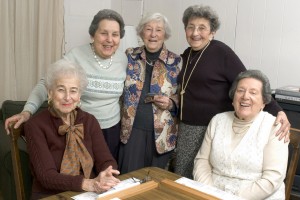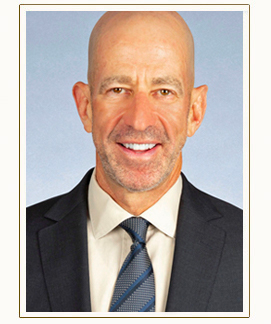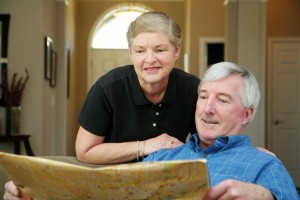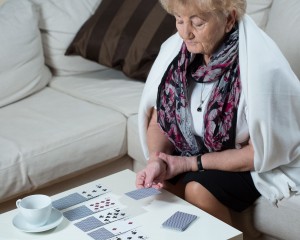Seniors are more at risk for mental illness than the general population. According to the Centers for Disease Control and Prevention (CDC), about 20 percent of people age 55 and older experience some kind of mental health concern. Not only are more seniors affected by mental illness, nearly one in three affected older adults does not receive treatment. By learning more about this often-misunderstood problem and watching for warning signs, we may be able to help elders in need get treatment.
 Most people are aware that seniors are more at risk for Alzheimer’s disease and other cognitive impairment. About 11 percent of seniors have Alzheimer’s disease, but it is crucial to understand that cognitive decline is not a normal part of aging. Therefore, changes such as increased forgetfulness, confusion or disorientation should be taken seriously. With a prompt diagnosis, seniors can benefit from treatment earlier, and any necessary changes to their living environment can be made in order to keep them safe.
Most people are aware that seniors are more at risk for Alzheimer’s disease and other cognitive impairment. About 11 percent of seniors have Alzheimer’s disease, but it is crucial to understand that cognitive decline is not a normal part of aging. Therefore, changes such as increased forgetfulness, confusion or disorientation should be taken seriously. With a prompt diagnosis, seniors can benefit from treatment earlier, and any necessary changes to their living environment can be made in order to keep them safe.
Seniors are also at risk for depression and mood disorders. According to the CDC, in a 2006 survey, 10.5 percent of people age 65 and older said they had received a diagnosis of depression at some time in their lives, and 5 percent had current depression. Another 7.6 percent received a diagnosis of an anxiety disorder at some time in their lives. Anxiety disorders can include a variety of problems, such as phobias, post-traumatic stress disorder and obsessive-compulsive disorder, including hoarding syndrome. Many seniors fail to seek treatment, in part because some people mistakenly believe that depression is a condition natural to aging.
Mental health concerns can have consequences beyond the symptoms of the condition itself. Untreated mental illness can lead to social isolation, take away from seniors’ independence, and cause physical problems and additional medical concerns. That is why it is important for seniors to take preventive measures, and for their loved ones to be aware of warning signs.
Studies have shown that preventive measures can alleviate mental health problems. The risk of depression and anxiety can be lowered as a result of better physical health. Simple exercise three times a week can be even more effective than prescription medication. Research also indicates that keeping the mind active, through social activities, games and puzzles, and communication with friends and family, can decrease the risk of mental health disorders.
Loved ones and caregivers should watch for changes that may indicate mental health concerns for seniors.
Warning signs include:
- social withdrawal,
- a depressed mood that lasts longer than two weeks,
- memory loss,
- confusion,
- feelings of worthlessness or guilt,
- unexplained physical changes, such as in dress, weight or hygiene.
If any of these symptoms appear, discuss them with the family doctor. Treatment such as counseling or psychiatric care can help seniors get on the right track to healthy aging.
Learn more about our services by visiting www.littmankrooks.com or www.elderlawnewyork.com.
Was this article of interest to you? If so, please LIKE our Facebook Page by clicking here or sign up for our newsletter.




 One of the proposed rules would allow financial advisers to wait up to 15 days to disburse funds from senior investors’ accounts if they reasonably believe that financial exploitation is occurring. The proposed rule defines a senior investor as a person who is age 65 or older, or an investor who may be vulnerable for other reasons. The rule would allow advisers to reach out to a person designated as a trusted contact.
One of the proposed rules would allow financial advisers to wait up to 15 days to disburse funds from senior investors’ accounts if they reasonably believe that financial exploitation is occurring. The proposed rule defines a senior investor as a person who is age 65 or older, or an investor who may be vulnerable for other reasons. The rule would allow advisers to reach out to a person designated as a trusted contact. The Sarah Neuman Center at Jewish Home has introduced the NightCare program designed to comfort and engage elders with this level of dementia, and to provide respite for their caregivers. Offered several nights per week, from 7 PM to 7 AM, the NightCare program is staffed by experienced, caring professionals like Ruth Mederski, LPC. She explains, “At night when these seniors can become more anxious, we are there to give reassurance.”
The Sarah Neuman Center at Jewish Home has introduced the NightCare program designed to comfort and engage elders with this level of dementia, and to provide respite for their caregivers. Offered several nights per week, from 7 PM to 7 AM, the NightCare program is staffed by experienced, caring professionals like Ruth Mederski, LPC. She explains, “At night when these seniors can become more anxious, we are there to give reassurance.”
